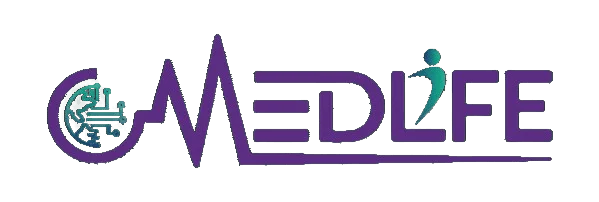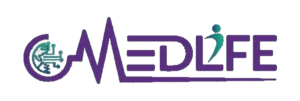Chiropractic billing involves preparing and submitting claims to insurance companies and receiving payments for services and treatments provided to patients. Over the last few years, Chiropractic billing has become one of the hardest billing practices to execute accurately. As cited in an article in Medical Billers & Coders, 30% of all chiropractic claims are denied on the first submission. These denials affect the cash flow and administrative work of the clinic. Hence, most practices partner with expert chiropractic billing services to replace the clinic’s documentation and compliance.
Need Help with Physical Therapy Billing?
Book a free consultation to simplify your billing, speed up reimbursements, and cut down denials.
TALK TO AN EXPERTAs a result of the latest updates on ICD-10 and CPT codes, chiropractic practices have had to change and adapt. Compliance with billing codes and clinic documentation is increasingly difficult to track and verify. This is the first in the series of guides on chiropractic billing and specialized billing services, aimed at assisting practices with up-to-date resources on the latest chiropractic billing practices and integrating primary compliance documentation to prevent flow disruptions.This guide delivers that roadmap, a deep dive into chiropractic billing and the value of specialized billing services, incorporating recent research and the latest CMS updates so your practice stays ahead of the curve while avoiding chiropractic billing mistakes.
Navigating Updated Coding Systems
Chiropractic billing is heavily reliant on precise coding. Incorrectly coded records lead to claim denials, which affect revenue. According to the American Chiropractic Association (2025), practices that adopt updated coding with staff training see a decrease in denials by 25–40%.
Recent CMS Updates (October 2025)
CMS has introduced important changes that providers must integrate into their workflows to remain compliant:
ICD-10 Code Revisions:
Codes M51.36 and M51.37 have been replaced with more specific codes to represent lumbago with sciatica accurately. These now include:
- M51.360 Lumbago with sciatica, right side
- M51.361 Lumbago with sciatica, left side
- M51.362 Lumbago with sciatica, bilateral
- M51.370 Lumbago with sciatica, unspecified side
- M51.371 Lumbago with sciatica, right side (variant)
- M51.372 Lumbago with sciatica, left side (variant)
These updates require clinics to ensure documentation reflects laterality and clinical justification accurately.
AT Modifier Requirement
Medicare requires the AT modifier for CPT codes 98940–98942 when billing for manipulative treatment (CMT). Failure to include this modifier results in automatic claim denial.
Claim Submission Rules
Claims must be submitted by the provider who performed the service. Payment follows the Medicare Physician Fee Schedule, which requires precision in coding and documentation.
CCI Guidelines
Manipulative treatment of up to five spinal regions is covered under Medicare. However, Evaluation & Management CPT codes (99242–99255) are not reimbursed for these services.
Key ICD-10 & CPT Codes for Clinics
| Code | Description |
| M54.5 | Low back pain |
| M54.2 | Cervicalgia |
| M54.4 | Lumbago with sciatica |
| 98940 | Manipulative treatment (1–2 spinal regions) |
| 98941 | Treatment for 3–4 spinal regions |
| 98942 | Treatment for all five spinal regions |
| G0283 | Electrical stimulation unattended |
Best Coding Practices
- Stay updated with ACA and CMS coding changes
- Use billing software with real-time code updates
- Conduct regular coding training sessions for staff
Effective Record-Keeping Through SOAP Notes
Effective documentation dictates the need for consistency and attention to detail. In the SOAP format, to be accepted, each section should be addressed specifically and entirely. Under the “Objective” heading, record all measurable clinical results that you found through your testing. These will include any deficits of the range of motion, any asymmetries, and results from palpation, as well as any pertinent changes and tissue.
A treatment plan must include the diagnosis, treatment objectives, number of visits, and anticipated results. Progress documentation must detail the patient’s progress or changes in the treatment plan.
Common documentation pitfalls include:
- Lack of detail or incompleteness,
- Absence of objective data to justify the treatment,
- Inconsistency of documentation throughout the visits.
Pro tip: Using structured templates for SOAP notes and treatment plans can help organize documentation, enhance compliance, and reduce time during audits. Simple monthly audits of your charts can reduce the risk of missing gaps and fix them before the claims go out.
Mastering Modifier Usage
Modifiers are very important in the discipline of chiropractic billing. They add crucial information to the codes and explain different aspects of the treatment. Claims often get rejected for not using or incorrectly using modifiers.
Primary modifiers
- Modifier 25 – A significant and separate service was provided on the same day.
- Modifier 59– A distinct procedural service.
Best practices for modifiers include using them only when your documentation justifies their use and checking the payer’s rules often to prevent unnecessary audits.
Essential Billing Strategies for Clinics
Like any other process, clinic billing entails a strategy.
Central strategies comprise:
- Checking eligibility: Given that patients’ insurance coverage can change, always verify eligibility before delivering treatment.
- Submitting clean claims: Before submitting claims, ensure that all patient details, service codes, and dates of treatment align.
- Obtaining pre-authorization: Services that require pre-authorization should always have such approval before proceeding to avoid subsequent denials.
- Submitting on time: Prompt claim filing will avoid unnecessary delays in payment.
Advanced strategies are the use of monthly billing audits, a denial management log to track and manage denial patterns, the use of integrating automated billing software, and ongoing staff development training.
Common Billing Challenges and Solutions
Billing challenges for clinics can affect profit and efficiency. Challenges can include claim denials because of incorrect medical billing codes, delays because of incomplete documentation, and a higher likelihood of audits because of erratic documentation.
The most efficient means of addressing the above challenges include regular documentation, timely audits, and communication with the insurance companies. Claim approval and the associated profit improve considerably with these practices.
Leveraging Technology for Efficient Billing
Probably the best billing software available today can automate the entire workflow of the billing process. Reduced errors, automated claim submissions and better tracking of claims denials can result from integrating the billing and electronic health records (EHR) systems.
Technology benefits include:
- Automated claim checking.
- Integration of documentation and coding without interruption.
- Real-time notifications regarding claim status and missing details.
Research shows that clinics with integrated systems are capable of reducing claim denials by 40% or more. This translates to quicker reimbursements and operational efficiency.
International Billing Considerations
Providers with international patients need to be aware of other billing rules and standards, coding systems and documentation rules. Countries may require certain medical records to be translated or have different coding standards. Knowing these differences will allow for compliance with billing rules and more expedient reimbursements.
Final Comments
While the focus areas of chiropractic billing in 2025 will still include compliance with coding changes, technology will make cash flow more easily managed along with comprehensive documentation, detailed claim justification, proper use of billing modifiers, and declining documentation changes will also improve denials.
You will not only maintain your revenue and cash flow, but also improve the long term viability of your practice by instituting a revised proactive chiropractic billing system and modernized processes in accordance with CMS guidelines.


